Are you looking for the best hidden gems in Rome for your upcoming trip? Look no further!
I firmly believe Rome is a must-see for every traveler. This city is for everyone — the wanderers, the adventurous, the history buffs, and those wishing to merely relax and enjoy the world around them.
Unsurprisingly, Rome has a plethora of tourists invading its most popular destinations daily. Although I do recommend checking out these popular spots as well, I believe that Rome has much to offer its visitors who want to take the path less travelled.
Some of the best hidden gems in Rome include the Piramide di Caio Cestius, the Domus Aurea, and Tiber Island. With the help of this list of my favorite secret spots and hidden things to do in Rome, you’ll be well on your way to experiencing the city as the Romans do!
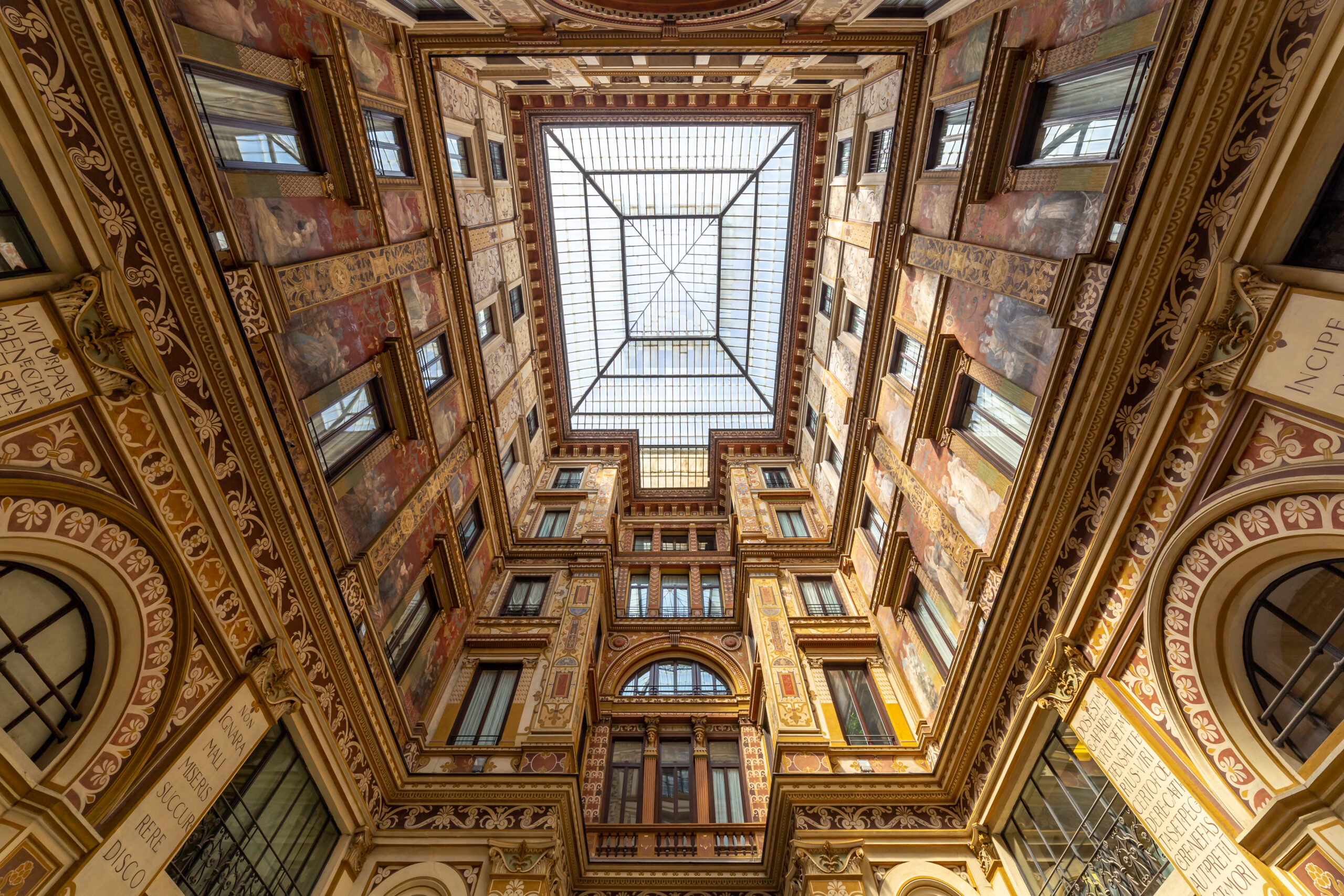
15 Hidden Gems In Rome
Piramide di Caio Cestius
In the corner of a busy intersection in the Roman neighborhood of Ostiense, and only a few meters from the famous Porto San Paolo it is a unique monument made of brick, cement, and beautiful white marble.
Straddled between two sides of the ancient Aurelian wall, the monument’s square base grows upwards to 120 feet (36 m) and meets at single point. It’s the only Pyramid you’ll find in Rome and actually all of Europe, and it’s under most tourists’ radars!
For tourists wanting to take a peek inside the tomb, reservations must be made ahead of time, and take place on the third and fourth Saturdays of each month. Otherwise, the general grounds of the pyramid (which includes a cat sanctuary!) are free to access.
For a calmer view of the pyramid, consider visiting he Protestant Cemetery on the backside of the ancient wall. Looking for more travel tips for Rome? Check our our 4 days in Rome itinerary!
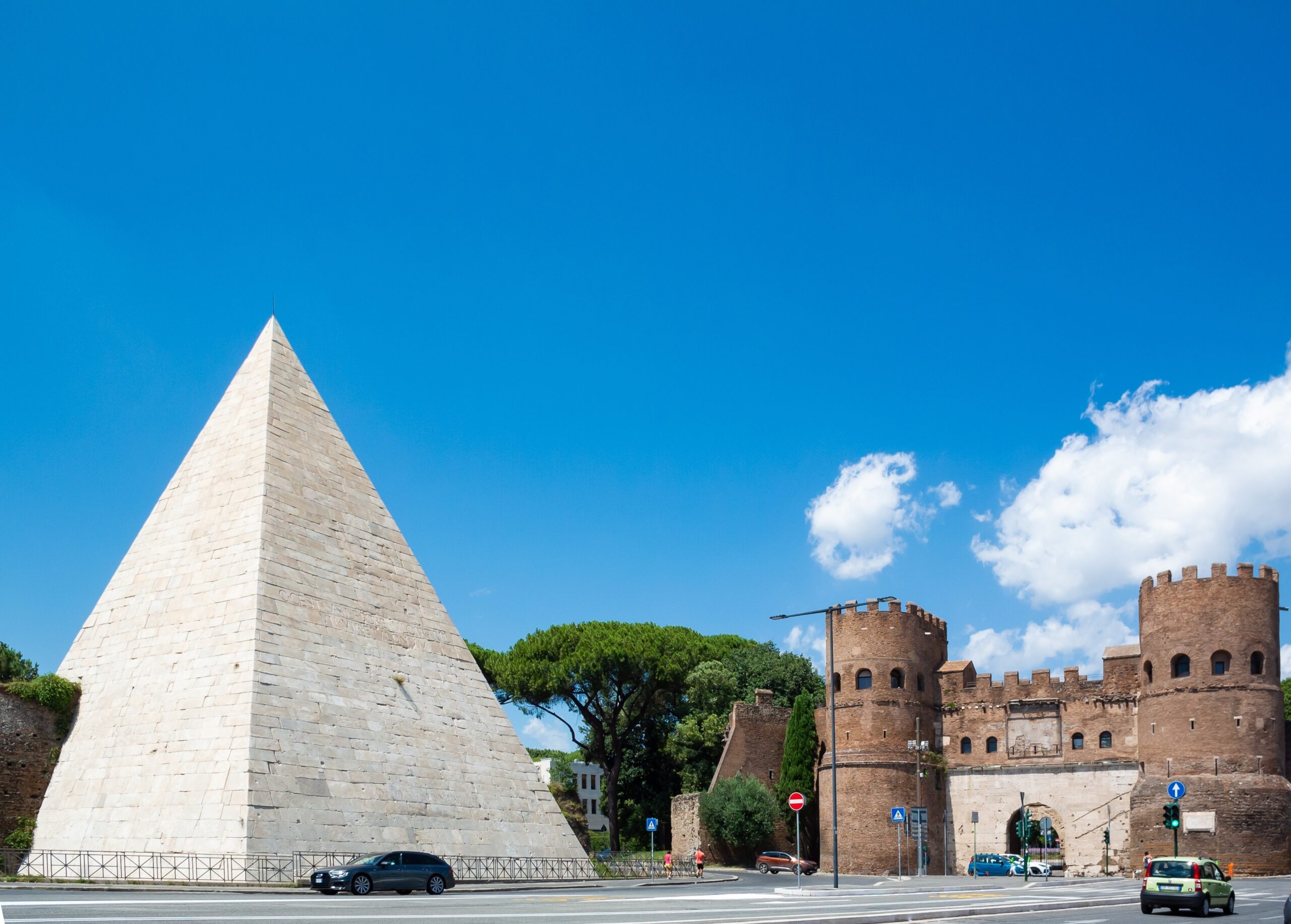
Appian Way
Before all roads led to Rome, this road was built. I’m tempted to call this entry on our list “Rome off the beaten path” but I suppose, while it’s not one of Rome’s most popular tourist destinations, this might be historicaally one of the most beaten paths in all the world.
One of the first and most important roads of the ancient Roman Republic, the Appian Way went far out of the immediate region around Rome and into the south of Italy.
The road was made to help transport troops outside region. Eventually running an incredible 350 miles (563km) in ancient times, the road is still the longest straight road in Europe! With many of its parts still used by traffic today, it can be walked by anybody, and it’s free.
You may recognize the name of this road because it is where the famous Spartacus and his army of 6000 slaves were crucified in 71 BC.
For the tourist interested in hiking this ancient wonder, most of the road immediately outside Rome (the Via Appia Antica) is now part of an archaeological park. It can be easily accessed from the park’s visitor center. You are definitely going to want to put this one on your Rome hidden gems itinerary.
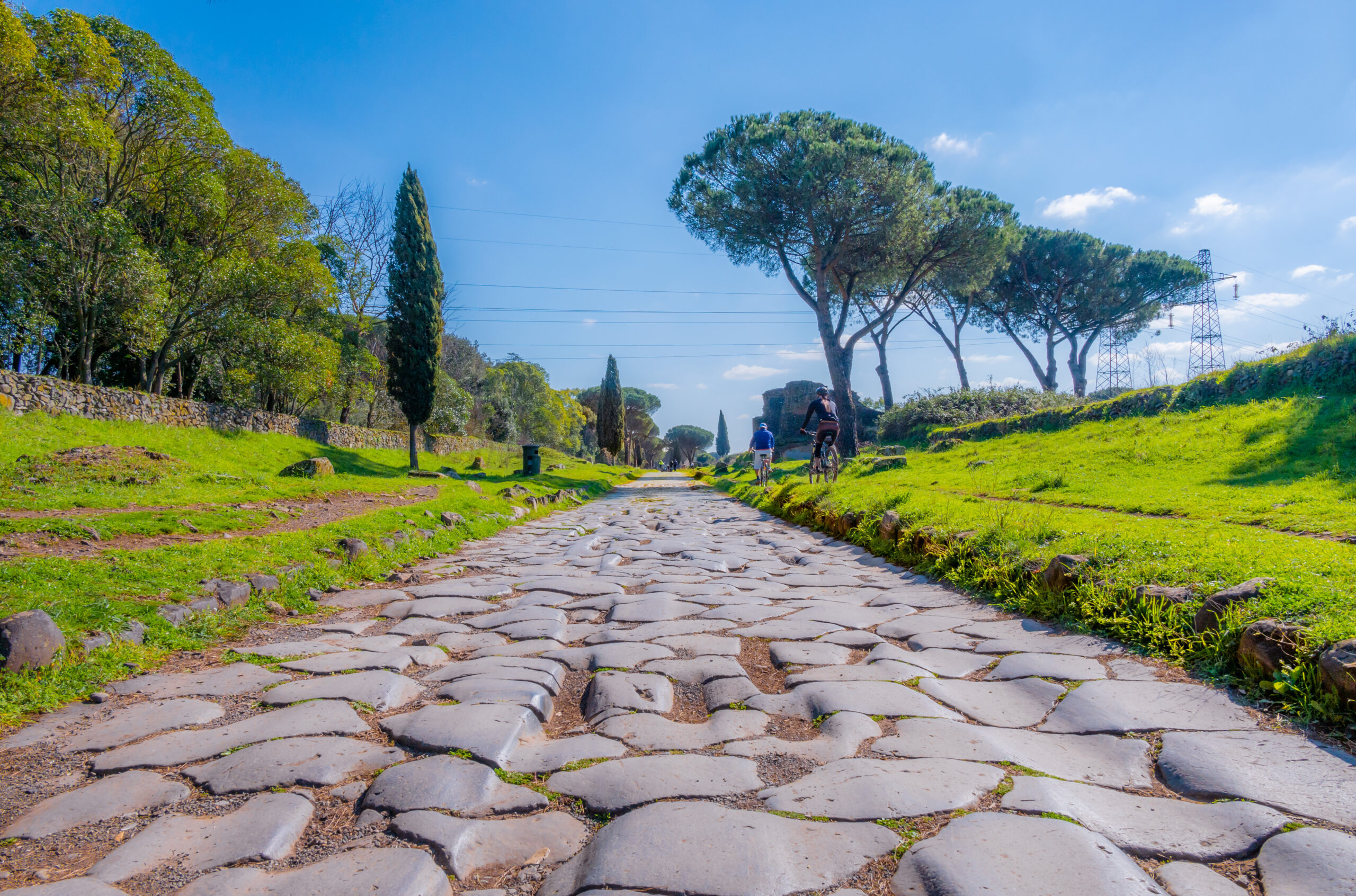
Domus Aurea
After the famous fire burned down much of the city of Rome in 64 AD, the unpopular Emperor Nero began construction on the most magnificent and extensive Domus ever built. The name Domus Aurea, or Golden House, refers to its extravagant well-known golden dome, but it doesn’t stop there.
The Domus built on the rubble of old aristocratic villas. It was essentially a countryside villa of approximately 300 acres but constructed in the very heart of Rome. The villa included groves of trees, an artificial lake, vineyards, and a large bronze statue of the emperor. Notoriously, the villa was a pleasure-only palace, designed for parties only, and consists of over 300 rooms!
For years, the Domus Aurea has been under intensive reconstruction, but it’s now fully accessible to the adventurous tourist. In addition to a physical tour, all visitors are also taken on a virtual reality tour of how the space looked in its prime. Few people know about the palace, so this is currently one of the best kept secrets in Rome. Make sure to come visit the Domus Aurea before it becomes a massive attraction.
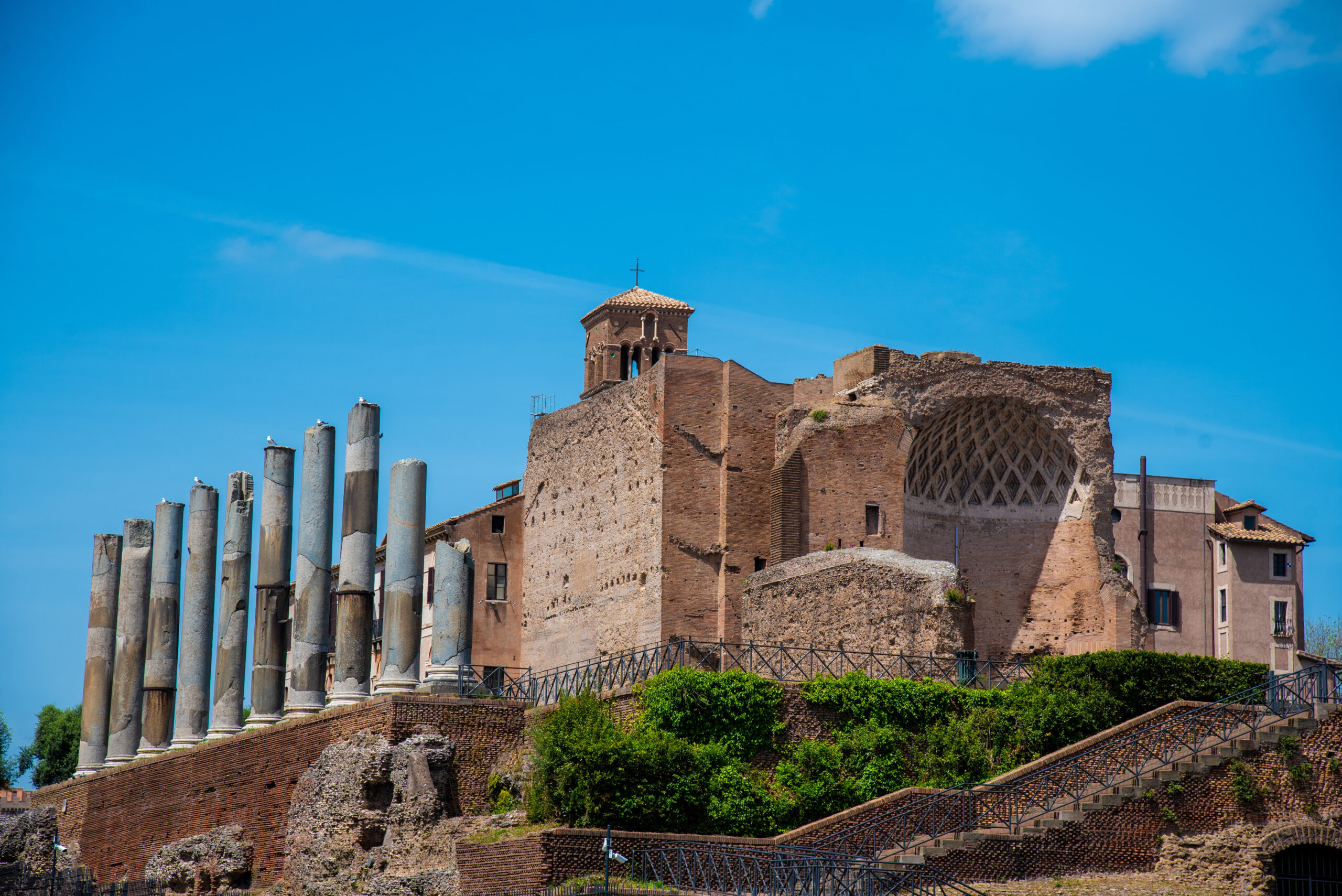
Galleria Sciarra
With an exterior suggesting no more than a typical office building, the Galleria Sciarra will take any unsuspecting pedestrian wandering through its interior courtyard by surprise.
Only a two minute walk from the Trevi Fountain, the Galleria Sciarra is a beautiful example of a one of the beautiful hidden places in Rome! It was completed in 1888 by Giulio De Angelis during an important wave of modernization.
Under the courtyard’s vaulted – iron-glass ceiling, colorful frescos cover every inch of space available. All the frescos are in the beautiful Nouveau Art style on the theme “Glorification of the Woman.”
Today the building is used as business offices. The courtyard is open to any passerby from Monday to Friday during business hours. This is the perfect stop for anyone looking to discover the beautiful unknown within this bustling city!
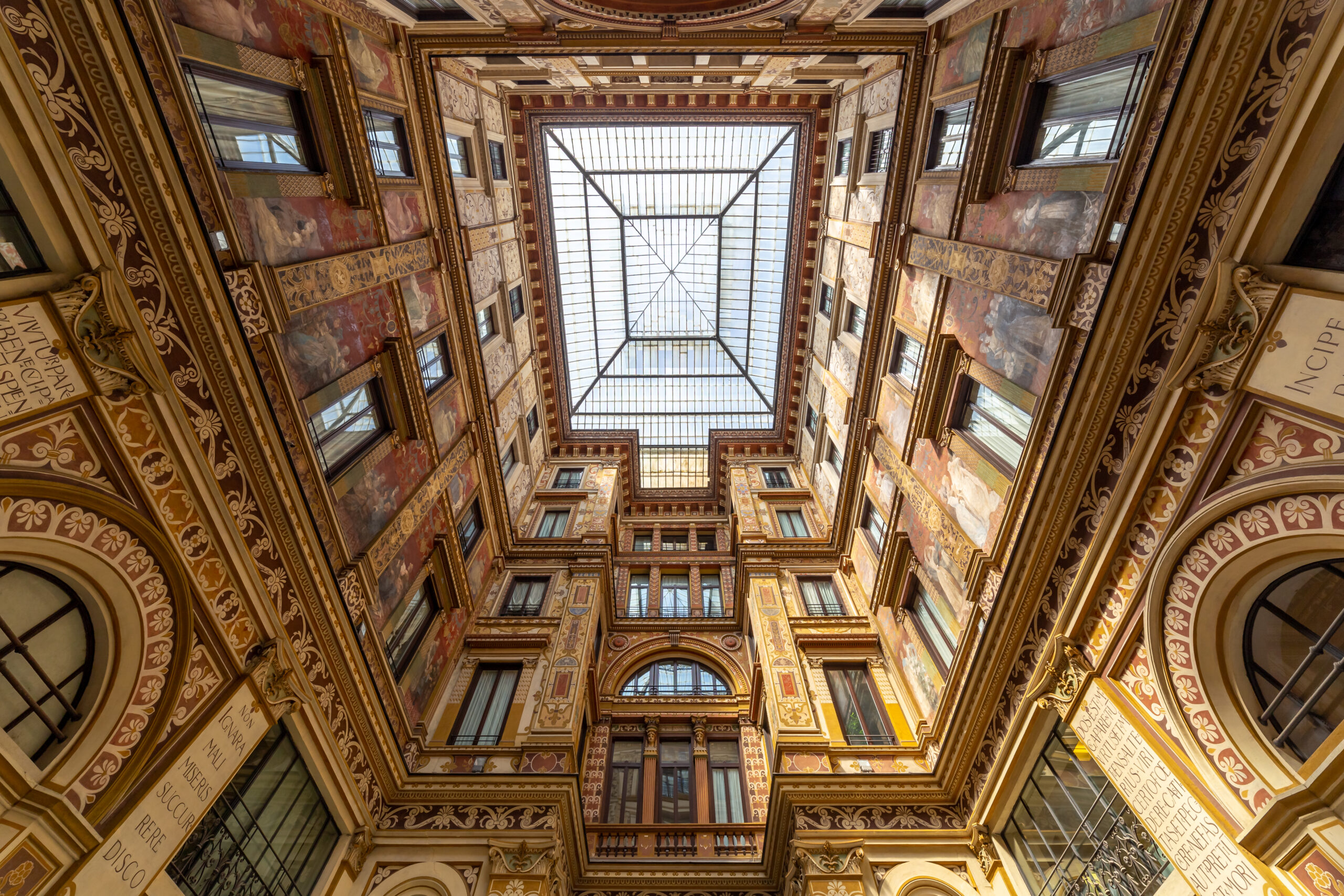
Tiber Island
The Tiber river famously runs through the city of Rome. But did you know there’s a small island in the Tiber set inside the city limits?A hoard of myths have surrounded the island from the beginning in the Roman Republic.
The island was chosen by a sacred snake to become a temple to Aesculapius (the Roman god of healing) in 293 BC. Since then the Tiber island has been used to heal or exile the sick for many years.
The temple was adapted into a church to St Adalbert in 998 AD and was later dedicated ot St. Bartholomew. The hospital Fatebenefratelli was constructed there to help treat plague patients in 1584 and is still in use today!
The oldest surviving monuments on this island are actually its bridges. The oldest complete bridge, Ponto Fabricio, was built in 62 BC and replaced an older wooden bridge.
The predecessor to the second bridge, Pons Aemilius, was built in 142 BC as the first stone bridge in Rome! Though visible, it’s known as Broken Bridge because it was mostly destroyed by a flood in 1598.
Frequented by both locals and tourists on their evening walks, Tiber island is a beautiful way to view the ancient city without the crowd. This health and healing island is undoubtedly one of the best things to visit off the beaten path in Rome.
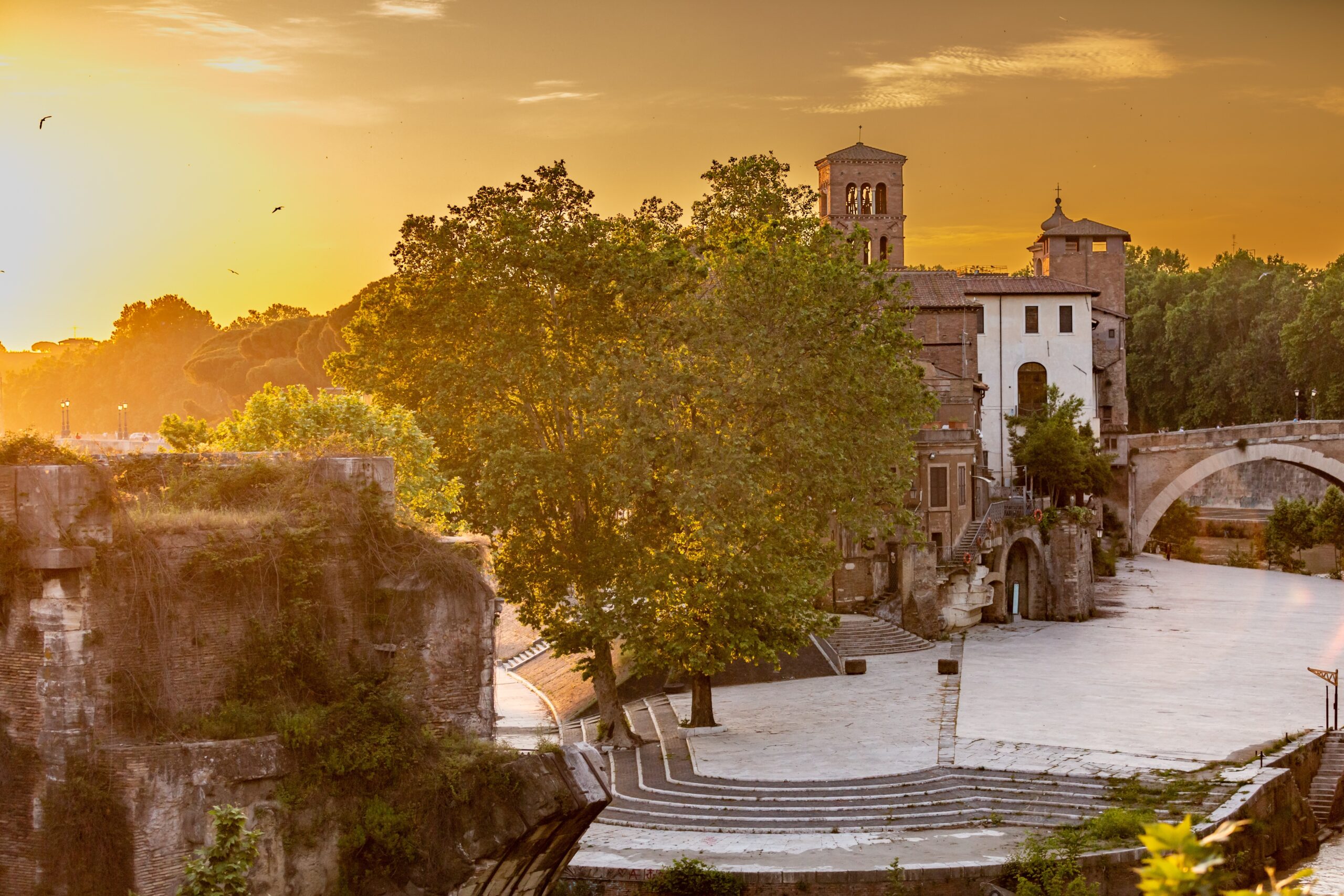
Trastevere
Crossing Tiber island from the east will bring one into the charming medieval town of Trastevere! This traditionally multicultural working-class district is an absolute must-see neighborhood and one of the most magical hidden gems in Rome!
What sets this neighborhood most apart from the rest of ancient Rome is its resilience to maintain a different cultural identity from its mainstream counterpart across the Tiber. So if you are looking for different things to do in Rome, you must visit Trastevere.
In ancient times Trastevere wasn’t part of the proper Roman city. After Rome conquered the area from the Etruscans to gain control of the Tiber river around 500 BC, the area became resident to many Roman sailors and fishermen. It was also to many immigrant groups, largely Jew and Syrian.
More than just winding cobblestone roads, romantic medieval houses and extravagant villas, Trastevere also boasts a thriving food and nightlife culture! Take plenty of time to settle down and enjoy engaging with locals and tourists alike as they flock into the town center during the evening.
For further reading and suggestions on where to stay when in Rome, check out our 2 days in Rome itinerary! If you’re longing to see Rome off the beaten track you’ll find plenty of tips for a smooth trip there.
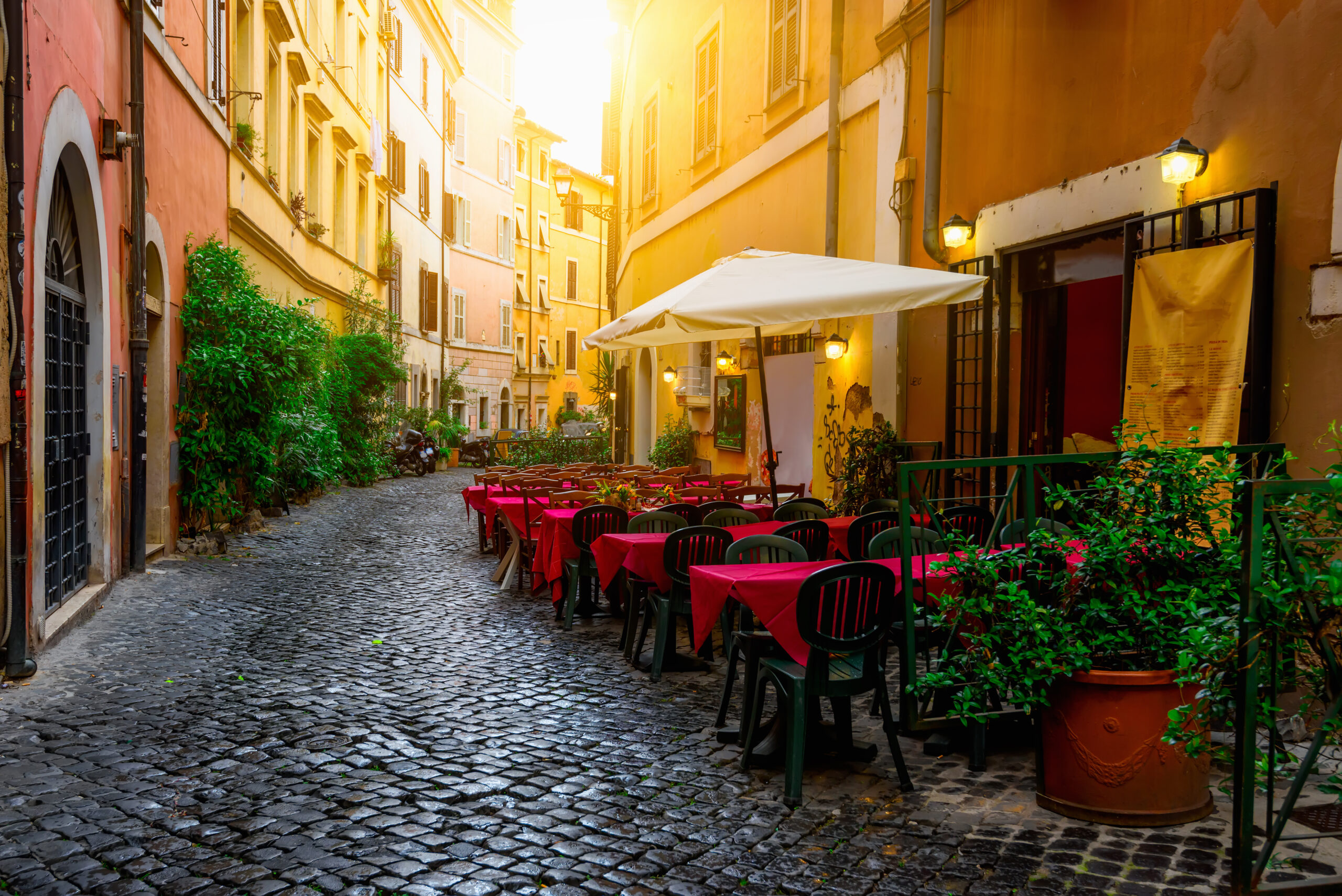
Le Mani in Pasta
While you’re visiting Trastevere in your quest for off-the-beaten-path things to do in Rome, you should definitely stop for a bite to eat at Le Mani in Pasta.
Make sure you come hungry, the legendary seafood here is mentioned in all the foodie hidden gems in Rome articles. The Trastevere area has been home to excellent fishers for centuries, so it makes sense a restaurant there would have the best seafood in Rome.
If seafood isn’t your thing, never fear. The restaurants name translates to Hands in the Pasta and all the pasta here is handmade and absolutely spectacular. If you want to compare the pastas at different hidden gem restaurants in Rome, you simply must order the Cacio y Pepe at Le Mani in Pasta in Trastevere.

Orto Botanico
Nestled in Trastevere, this green gem is home to a whopping 3,000+ plant species. The crazy part? Despite its obvious beauty, it’s like a hidden oasis of tranquility – the perfect escape from the hustle and bustle of Rome.
And here’s the inside scoop: The Orto Botanico, as it’s known locally, isn’t just about the plants; it’s a whole vibe. Imagine wandering through themed gardens, catching a zen moment in the Japanese section, feeling the cool mist of a waterfall, and soaking in the beauty of carefully curated landscapes. This is one of my favorite non-touristy places in Rome.
Bonus tip: If you’re looking for a serene garden experience without the masses, this is your golden ticket. Sure, Villa Borghese is stunning, but Orto Botanico will you revel in Roman cultivated greenery without the tourist crowd chaos. Make sure to add Orto Botanico to your list of cool places in Rome and Rome secret spots to visit.
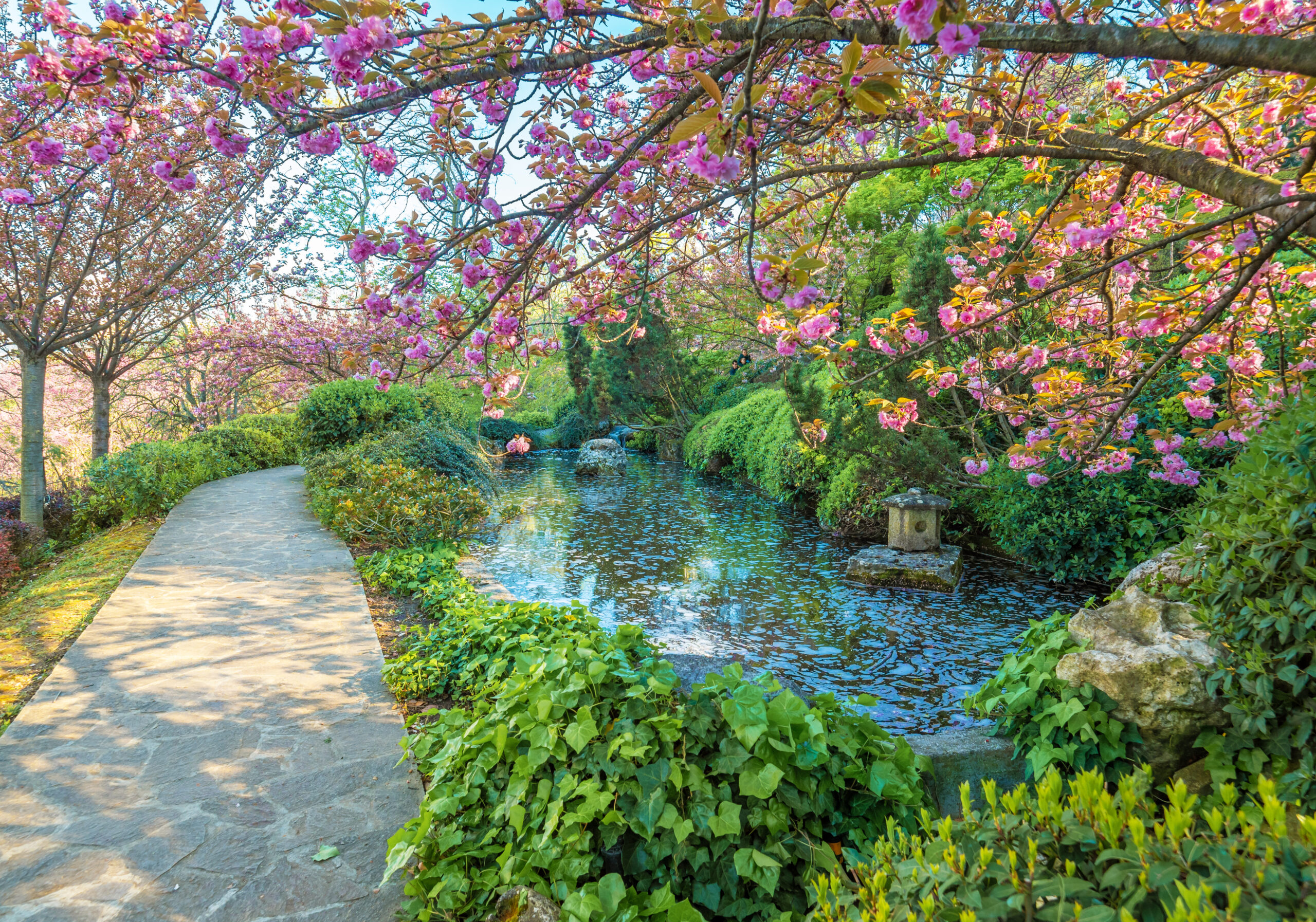
Gianicolo Hill
Gianicolo hill is in a central location that offers viewers a panoramic view of the heart of Rome away from the hustle and bustle. Many locals consider this one of the best hidden spots in Rome. From this hill, one is able to see great views of St. Peter’s Basilica and the Altare della Patria.
The name Gianicolo refers to the god Giano (the Italian name for the Latin name, Janus.) He is the two-faced god of beginnings, transitions, and end. This name symbolically references to the hill’s strategic position in the city as the gateway between Rome and the outside world.
The views are always beautiful, though I recommend arriving just before dusk or dawn to see its breathtaking sunsets and sunrises. Alternatively, come at midday to watch the daily firing of the cannon at noon, a tradition since 1847!
For those with children, the nearby open-air theater, the Teatrino di Pulcinella al Gianicolo, has been putting on puppet shows for families since 1959. Catch a free show on Saturdays and Sundays from 10:30am-1:00pm, and 4:00pm-7:00pm!
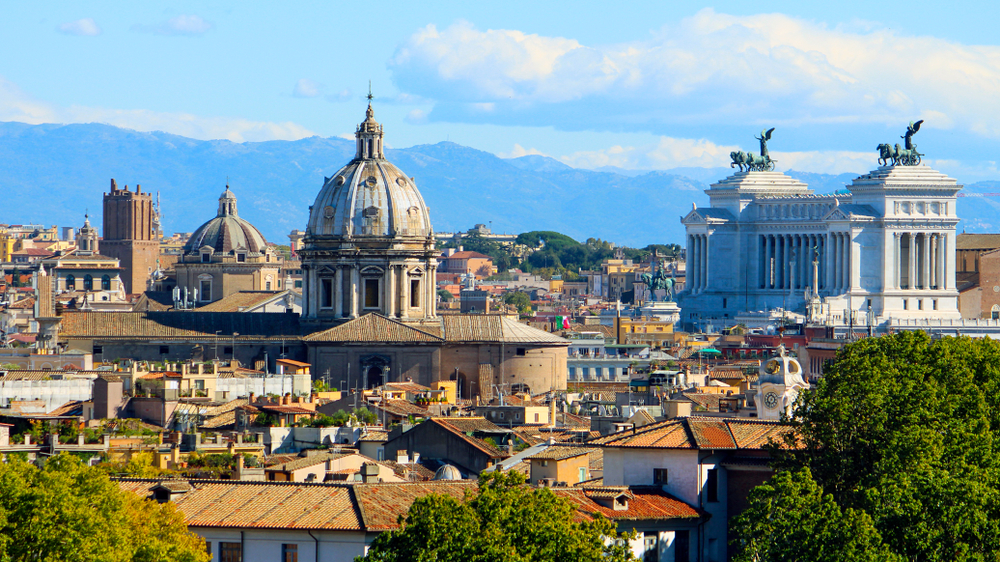
Teatro Marcello
This older and less crowded version of the colosseum is off the beaten track in Rome. Teatro Marcello stands as a testament to Roman architecture. Built during the final years of the Roman Republic and the early years of the Roman Empire, it’s a true blend of history and grandeur.
The legendary Julius Caesar gave the nod to clear the land for the epic Teatro Marcello. Unfortunately, he didn’t get to see it come to life due to his untimely assassination.
Today, the lower levels of Teatro Marcello showcase epic arches and columns that have withstood the test of time. When you visit this Roman monument be sure to note the more modern top-tier windows! Those are apartments that modern Romans live in. Can you imagine what it is like to live in such an epic piece of history?
This blend of ancient and modern creates a captivating atmosphere for history buffs and casual wanderers alike. Currently, exploring the interior isn’t an option as it is a private residence. However, trust me, soaking in the exterior is a must when you’re looking for unusual things to do in Rome.
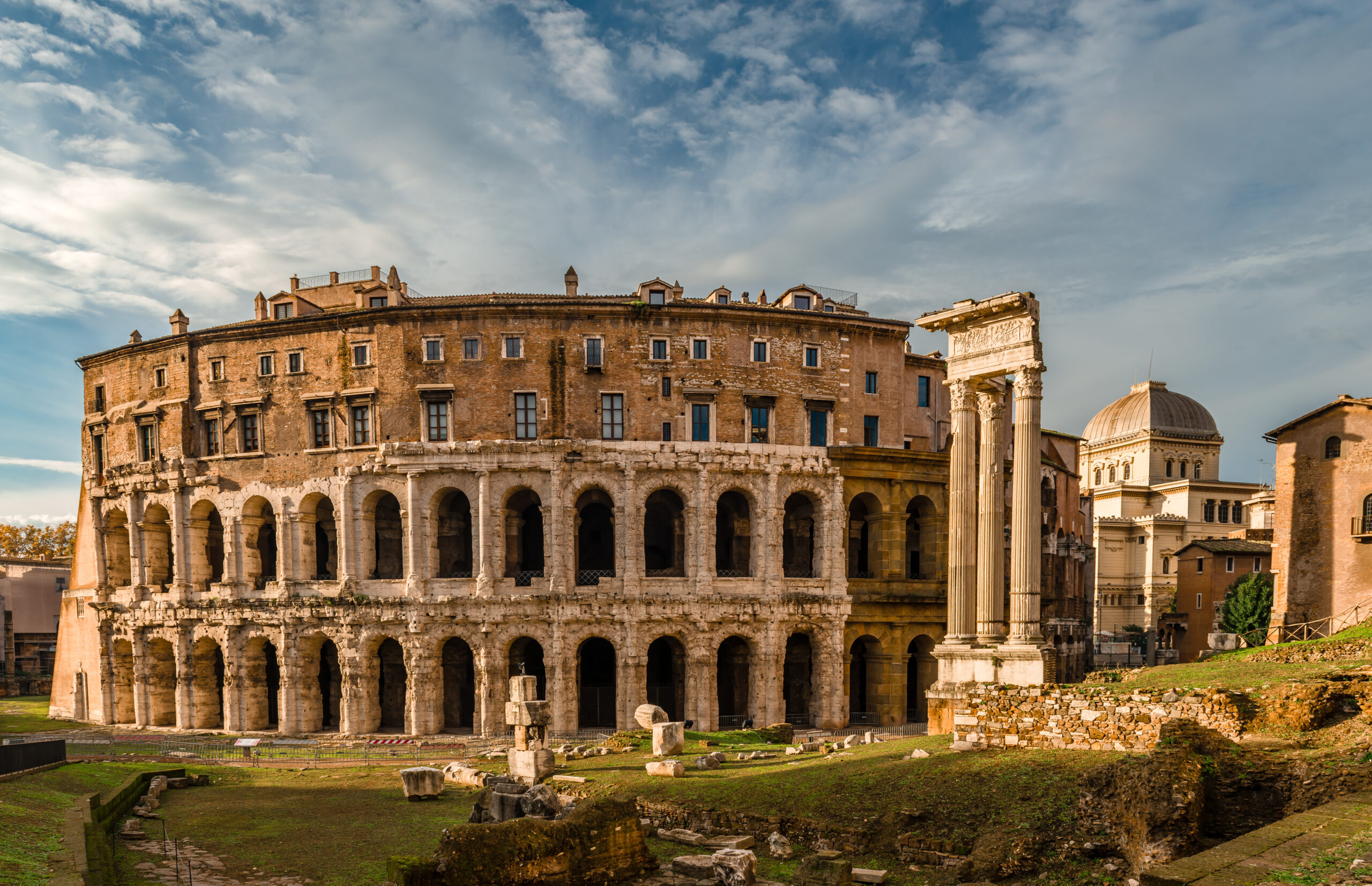
Vicus Caprarius
Just a short stroll from the iconic Trevi Fountain, there’s a hidden gem also related to Rome’s world famous waterworks. It feels worlds away from the hustle and bustle of Rome’s usual tourist spots.
These underground ruins, rediscovered in 1999, offer a journey back to ancient Rome, peeling back the literal layers of the city. The best part? The famous ancient Roman plumbing is still active here! You can actually see and hear water flowing through the historic pipes as you explore.
Stepping into Vicus Caprarius feels like discovering a hidden level in Rome. As the monument has been gaining popularity lately it might be worth it to make a reservation.
This is a must see hidden gem in Rome for history buffs and for those wondering what is going on beneath the surface of the city. This underground marvel is the very definition of secret places in Rome!
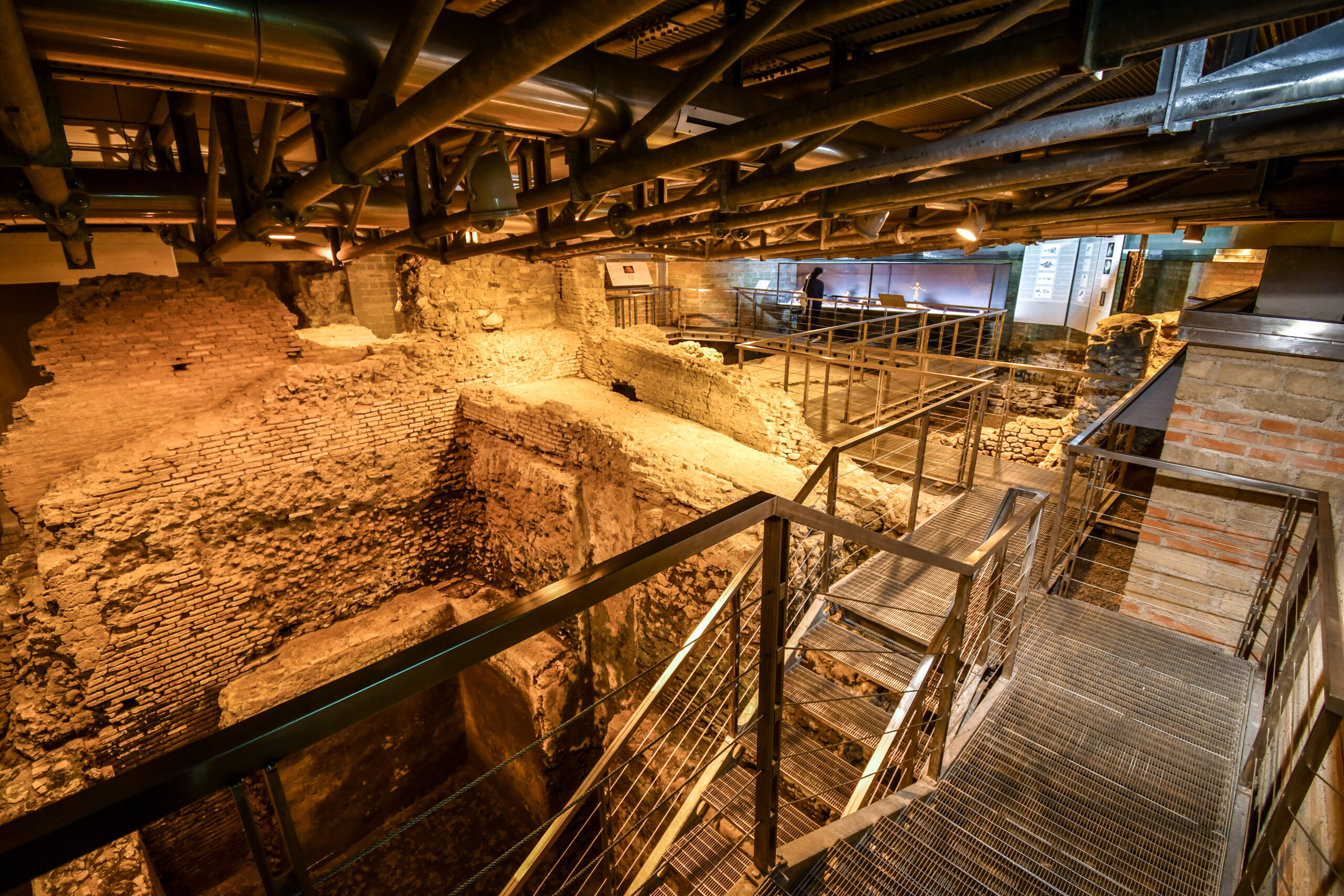
Via Piccolomini
Via Piccolomini is one of the best offbeat things to do in Rome.
The location in itself is a simple street with a good view of Saint Peter’s Basilica’s dome. However it packs a fun secret! During evening hours, locals arrive on their motorbikes to drive up and down this street.
They aren’t here to see the view. Instead, Via Piccolomini attracts visitors who want to see it perform an optical illusion! As one moves towards the dome of St. Peter’s Basilica, the building appears to shrink. If one moves backwards, it appears to grow bigger!
Locals recommend using a motorbike to view the illusion because the speed of the vehicle helps to exaggerate its effect!
Walking or driving, Piccolomini is something fun and curious that must be experienced while in Rome. It is also one of the best things to do in Rome at night as the views are amazing!
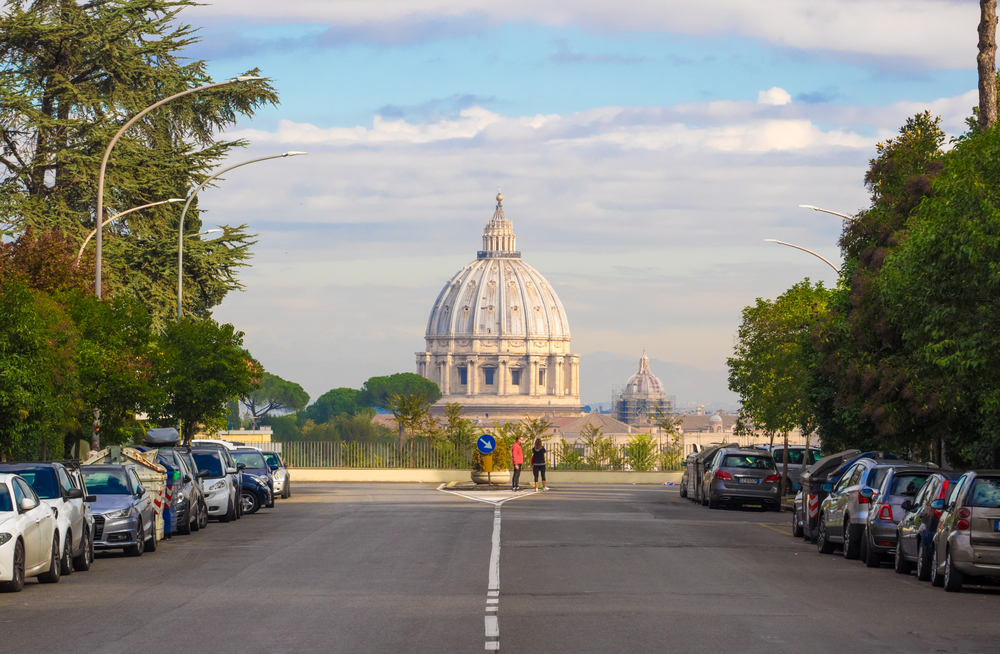
Ara Pacis Museum
The Ara Pacis museum is one of the most unique experiences in Rome. The imposing modern structure immediately became the center of controversy when it was completed in 2006.
However, the objective of the new construction was an important one. The Ara Pacis museum replaced an older, decaying structure whose purpose was to protect Rome’s cultural legacy.
A new, a state-of-the-art facility was needed to help maintain the collections that would be exhibited inside. Most importantly, the museum would be designed around the display of the famous Ara Pacis, a stone sacrificial altar dating from 9 BC. Secondarily, it would function to accommodate temporary exhibitions dedicated to archaeological displays.
The building is open from Tuesday to Sunday from 9am to 7pm. Although it’s very different from the rest of its ancient surroundings, its surprisingly compliments them.
A beautiful ode to the city’s past, and the past’s place in the present, the Ara Pacis is definitely one of the hidden gems in Rome you won’t want to miss out on.
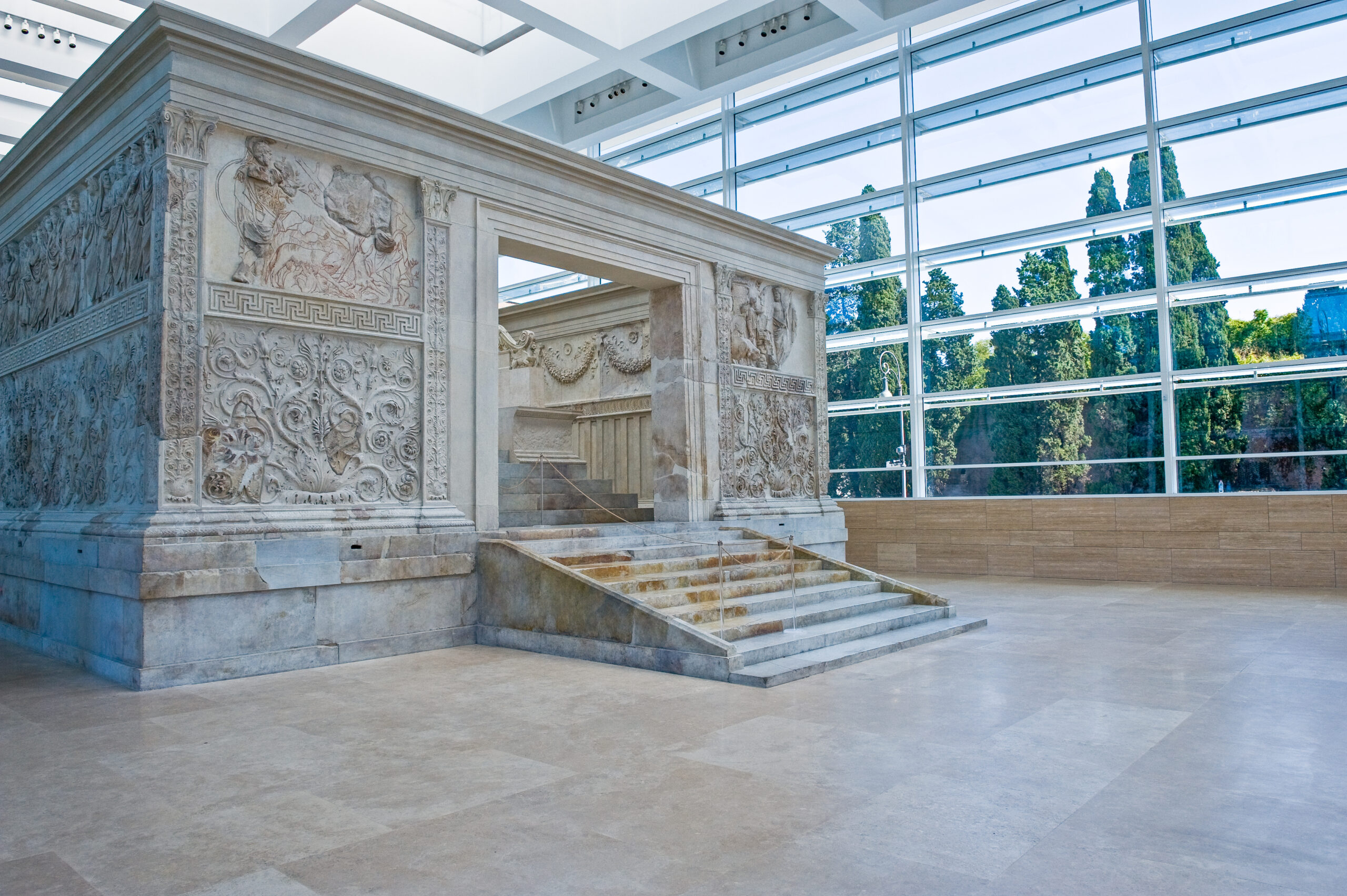
Capuchin Crypt
This entry on our list of Rome’s secret places is for those who are goth at heart and/or interested in old graveyards. Brace yourselves for the Capuchin Crypt – one of the alternative things to do in Rome that’s quite unlike anything you’ve seen before!
But, hey, fair heads up – it’s not everyone’s cup of gelato.
Back in the 17th century, monks here started building the Capuchin Crypt. They built it using the skeletons of the deceased from the monastery. Picture this: chapels with human bone altars, chandeliers crafted from human bones, and full skeletons rocking monk robes lounging on beds of bones.
While this is not a good stop for those with kids, those not comfortable with thinking afterlife, or anyone with cartilogenophobia, if you are into spooky vibes you must add this to your list of what not to miss in Rome. The Capuchin crypt is definitely one of the most unusual Rome attractions.
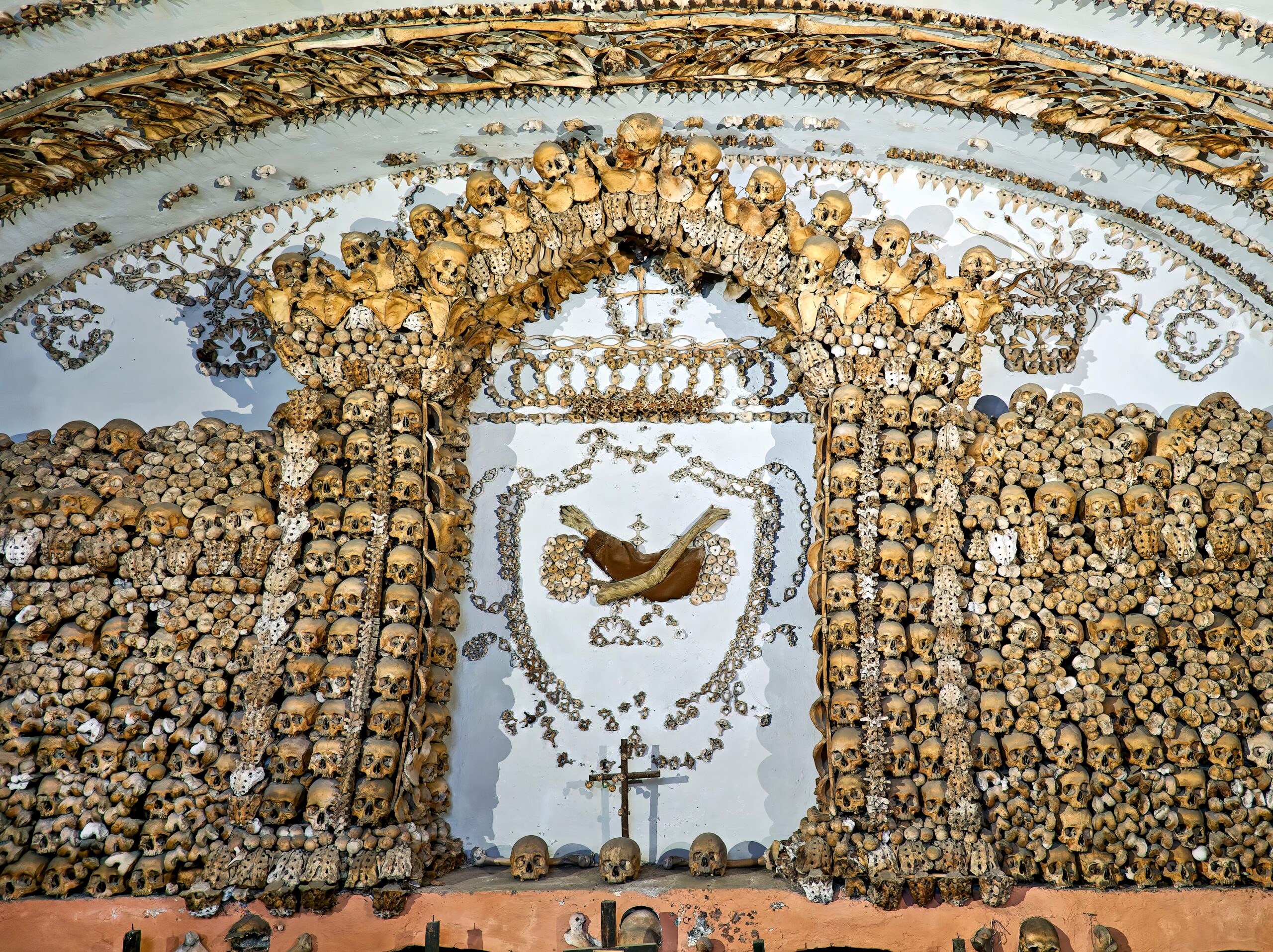
Palazzo Doria Pamphilj
The Palazzo Doria Pamphilj is a mansion housing what may be the best-known private gallery in Rome. The mansion, and all of its collections have been maintained by the Doria Pamphilj family (beginning in the 16thcentury) for over 400 years!
This collection holds works by Raphael, Tiziano, Caravaggio, Brueghel the Elder and Bernini, among many others. Just as fascinating, many rooms in the mansion are lavishly dressed and set with furniture to demonstrate how the rooms originally appeared centuries ago.
For art lovers and history buffs who want to avoid the large crowds, Palazzo Doria Pamphilj is a great option!
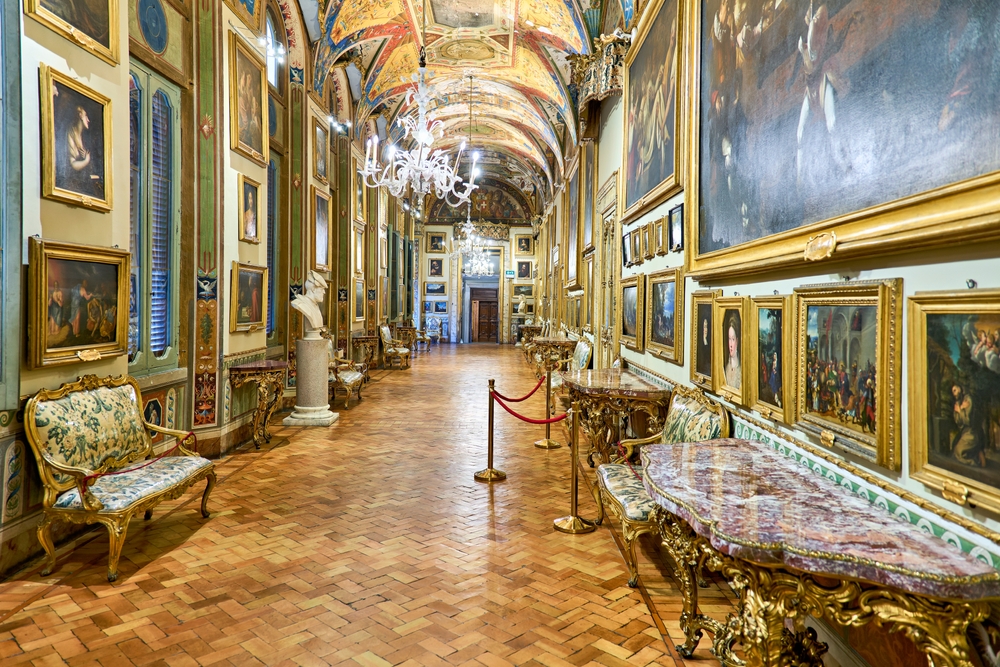
Baths of Caracalla
If you’re looking for unique things to do in Rome that will make you feel like a time traveller, I highly reccomend exploring the Baths of Caracalla. These ancient Roman baths are better preserved and less crowded than their counterparts the famous Baths of Diocletian.
The Baths of Caracalla were once the second-largest public baths in Rome. This fact gives you some serious insight into how much Romans loved and prioritized their public baths. These ruins are massive and offer an exclusive look into ancient Roman life.
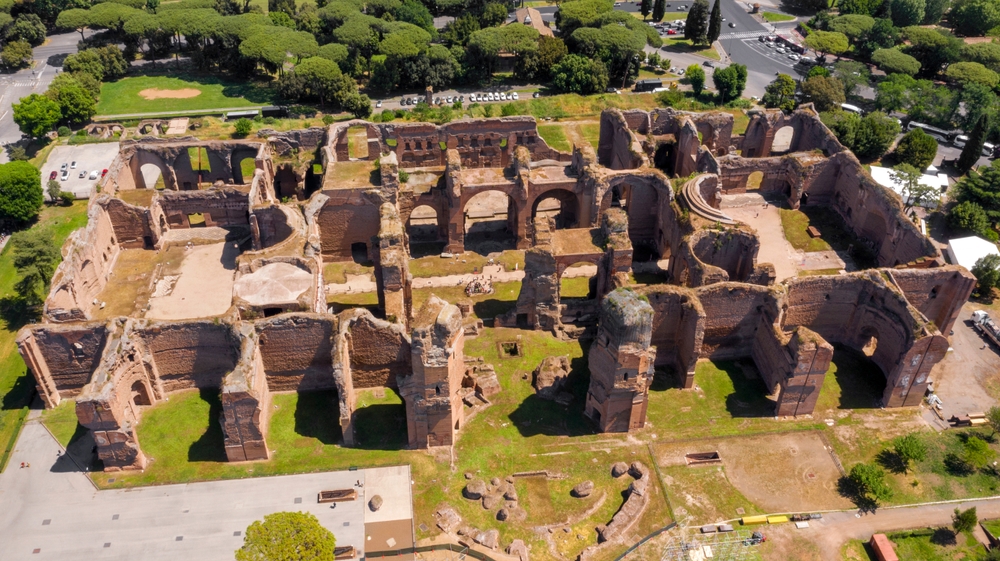
For good reasons, Rome is one of the most popular tourist destinations in the world. From St. Peter’s Basilica to the Trevi Fountain, everything is going to be on your itinerary. But don’t overlook these hidden gems! They might become the most memorable places in your trip!
An authentic trip to Rome sometimes means stepping away from the main attractions, and getting lost somewhere new and unfamiliar. Luckily for everyone, Rome can be both familiar and new! With these 15 hidden gems in Rome, your trip will surely be unforgettable.
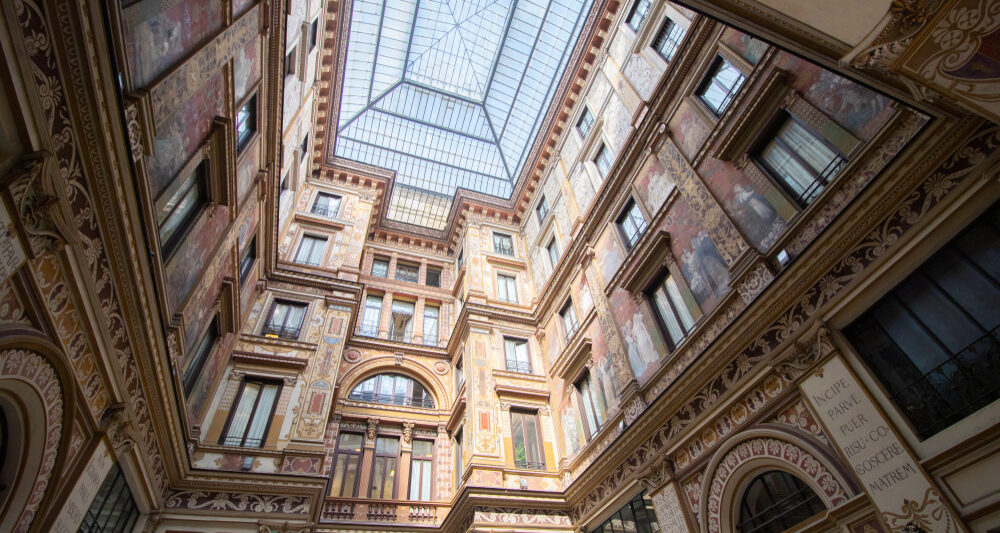
 20 Best Things To Do In Tuscany For Your Bucket List
20 Best Things To Do In Tuscany For Your Bucket List